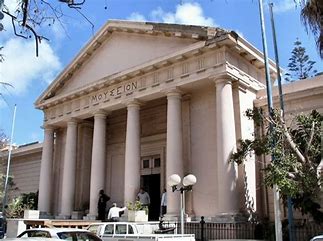Alexandria History Tour with the Greek and Roman Museum: A Journey Through Ancient Civilizations
An Alexandria History Tour with the Greek and Roman Museum is a captivating exploration of the city’s rich heritage as a crossroads of ancient civilizations. Founded by Alexander the Great in 331 BCE, Alexandria was once the cultural and intellectual capital of the ancient world. This tour takes you through the city’s most iconic historical sites, culminating in a visit to the Greek and Roman Museum, where you’ll discover artifacts that tell the story of Alexandria’s Greco-Roman past.
Highlights of the Tour
The Greek and Roman Museum
The Greek and Roman Museum houses an impressive collection of artifacts from Alexandria’s Greco-Roman period, including statues, pottery, jewelry, and mosaics.
Historical Insight: The museum showcases the blending of Greek, Roman, and Egyptian cultures in Alexandria, highlighting the city’s role as a melting pot of civilizations.
Key Exhibits:
Statues of Greek and Roman gods and emperors.
Mosaics depicting mythological scenes.
Everyday objects that offer a glimpse into ancient life.
Pompey’s Pillar and the Serapeum
Pompey’s Pillar is a massive Roman column that stands as a symbol of Alexandria’s ancient grandeur. Nearby, the ruins of the Serapeum (Temple of Serapis) reflect the city’s religious diversity.
Historical Insight: The pillar was erected in honor of the Roman Emperor Diocletian, while the Serapeum was a center of worship for the Greco-Egyptian god Serapis.
The Catacombs of Kom El Shoqafa
The Catacombs of Kom El Shoqafa are a fascinating blend of Egyptian, Greek, and Roman architectural styles. This underground necropolis features intricate carvings, statues, and burial chambers.
Historical Insight: The catacombs date back to the 2nd century CE and provide a unique glimpse into the cultural fusion of ancient Alexandria.
القلعة Qaitbay
The Qaitbay Citadel is a 15th-century fortress built on the site of the ancient Pharos Lighthouse, one of the Seven Wonders of the Ancient World.
Historical Insight: The citadel was constructed to protect Alexandria from invaders and stands as a testament to the city’s strategic importance throughout history.
Bibliotheca Alexandrina
The modern Bibliotheca Alexandrina is a tribute to the ancient Library of Alexandria, which was the largest library in the ancient world.
Historical Insight: The library symbolizes Alexandria’s legacy as a center of knowledge and learning, attracting scholars from across the Mediterranean.
Why This Tour is Special
This tour offers a comprehensive look at Alexandria’s history, from its founding by Alexander the Great to its role as a cultural hub in the Greco-Roman era. The Greek and Roman Museum provides a deeper understanding of the city’s unique blend of cultures, while the other sites showcase its architectural and historical significance.
Alexandria is the second largest city in Egypt and the largest city on the Mediterranean coast. It lies at the western edge of the Nile River delta. Founded in c. 331 BC by Alexander the Great,[9] Alexandria grew rapidly and became a major centre of Hellenic civilization, eventually replacing Memphis, in present-day Greater Cairo, as Egypt’s capital. Called the “Bride of the Mediterranean” internationally,[10] Alexandria is a popular tourist destination and an important industrial centre due to its natural gas and oil pipelines from Suez.
What You’ll Take Away
An Alexandria History Tour with the Greek and Roman Museum is a journey through time, offering a glimpse into the city’s golden age as a center of ancient civilization. From the grandeur of Pompey’s Pillar to the cultural fusion of the Catacombs, you’ll leave with a deeper appreciation for Alexandria’s rich heritage.


